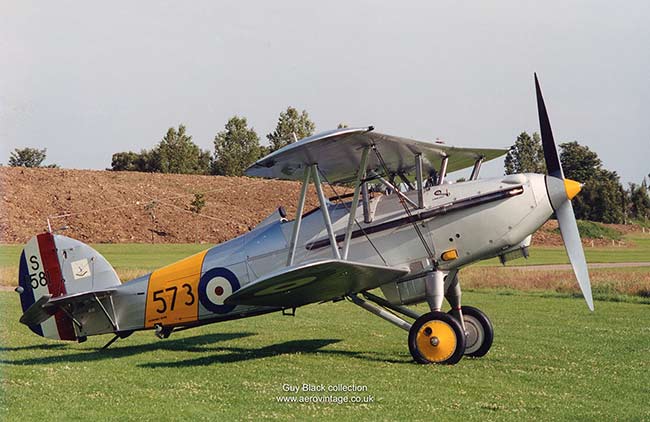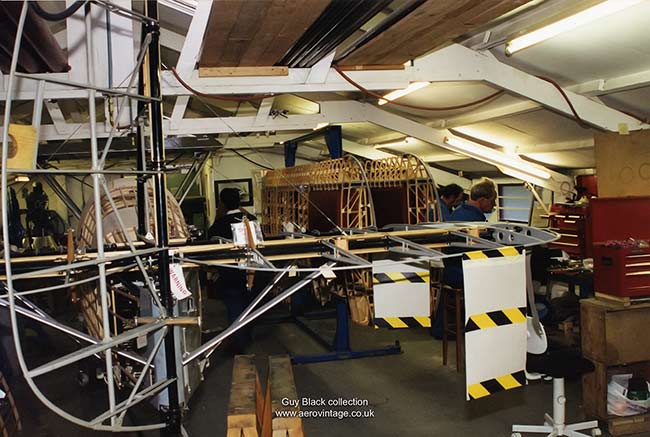Cookies
We use cookies to ensure that we give you get the best experience on our website.
Using this website means you're ok with this.
OK
Hawker Nimrod I S1581

Hawker Nimrod I S1581
The aircraft was found by a West Sussex based collector called Roddy Morgan in Colley's scrapyard in Hounslow many years ago, who passed the remains onto the RAF Museum. They in turn exchanged just the fuselage for a pair of Bristol Bulldog wings with Mr. Viv Bellamy, of Land's End airport, who used this fuselage as patterns to construct a non-authentic Hawker Fury replica for the then well-known collector, The Hon. Patrick Lindsay.
These remains and other collected Hawker parts were purchased by Aero Vintage from Mr. Bellamy, and later on the wings were acquired from the RAF Museum.
We are not sure how the aircraft remains arrived at Colley's other than the fact that this company was the official scrap collectors for Hawker's just down the road. The RAF/FAA history has been lost, though evidence from log books and photographs show the aircraft still in service on HMS Glorious, with 802 Squadron in 1938 and '507' painted on both sides of the rear fuselage. The last official record of this aircraft was it having a category "W" landing accident in Malta, 1938. It was interesting to find that the cowling remains had traces of brown/green camouflage, this scheme being applied in 1938 at the time of the Munich crisis. Perhaps it was not repaired, though there was no evidence of any damage to the airframe.
The RAF identity was found on a number of major components (fuel tank, the fuel tank mount, oil tank etc.,) as a crudely painted 'N 81'. On a brass data plate on the oil tank was the date '10-12-31' and the manufacturer's serial of 41H.43617. On this evidence and the fact that it is a Nimrod 1 from the construction (numerous components are part numbered), we are fairly certain this aircraft is in fact S.1581, as it was practice in the Navy at the time to brush crudely on major components an abbreviated serial, due to the frequent repairs needed after deck landings.
With most of the major assemblies of aircraft evident, but in very rusty or poor condition, we were faced with a re-construction (repair) whereby most of the non-stainless steel components needed to be replaced. The aircraft is liberally adorned with stainless steel junction plates all or most of which were re-used, as indeed also the heavy steel and aluminium parts.
The aircraft was completed during the summer of 2000, and the first flight was on the 7th of July from RAF Henlow. A comprehensive development period followed, which was satisfactory completed. The aircraft was exchanged for the Fighter Collections Hawker Hurricane in 2002.

